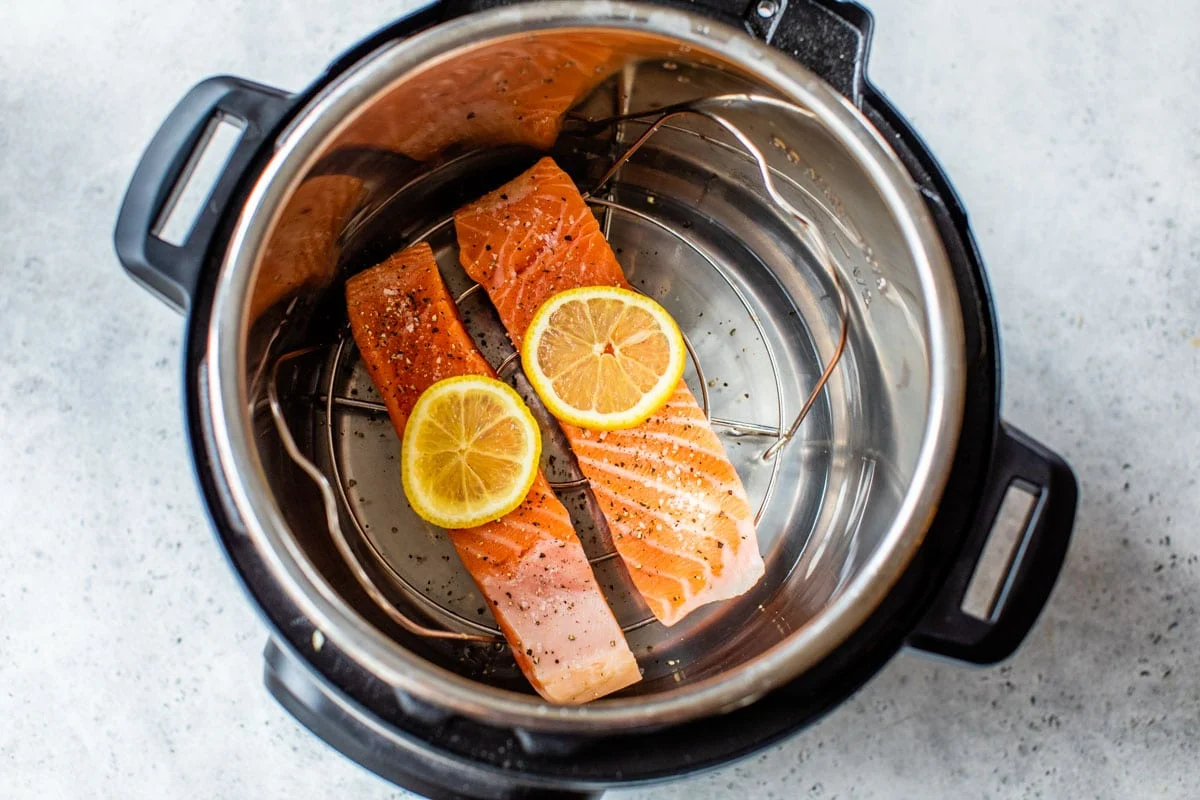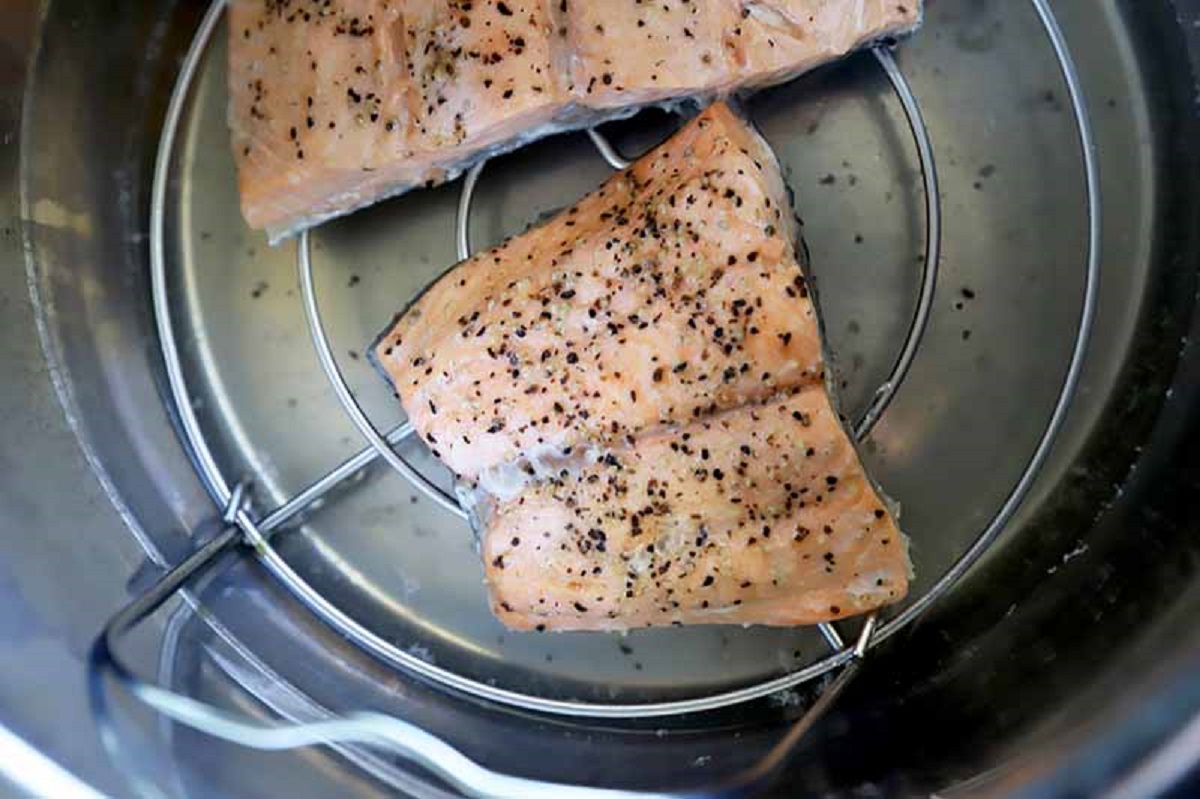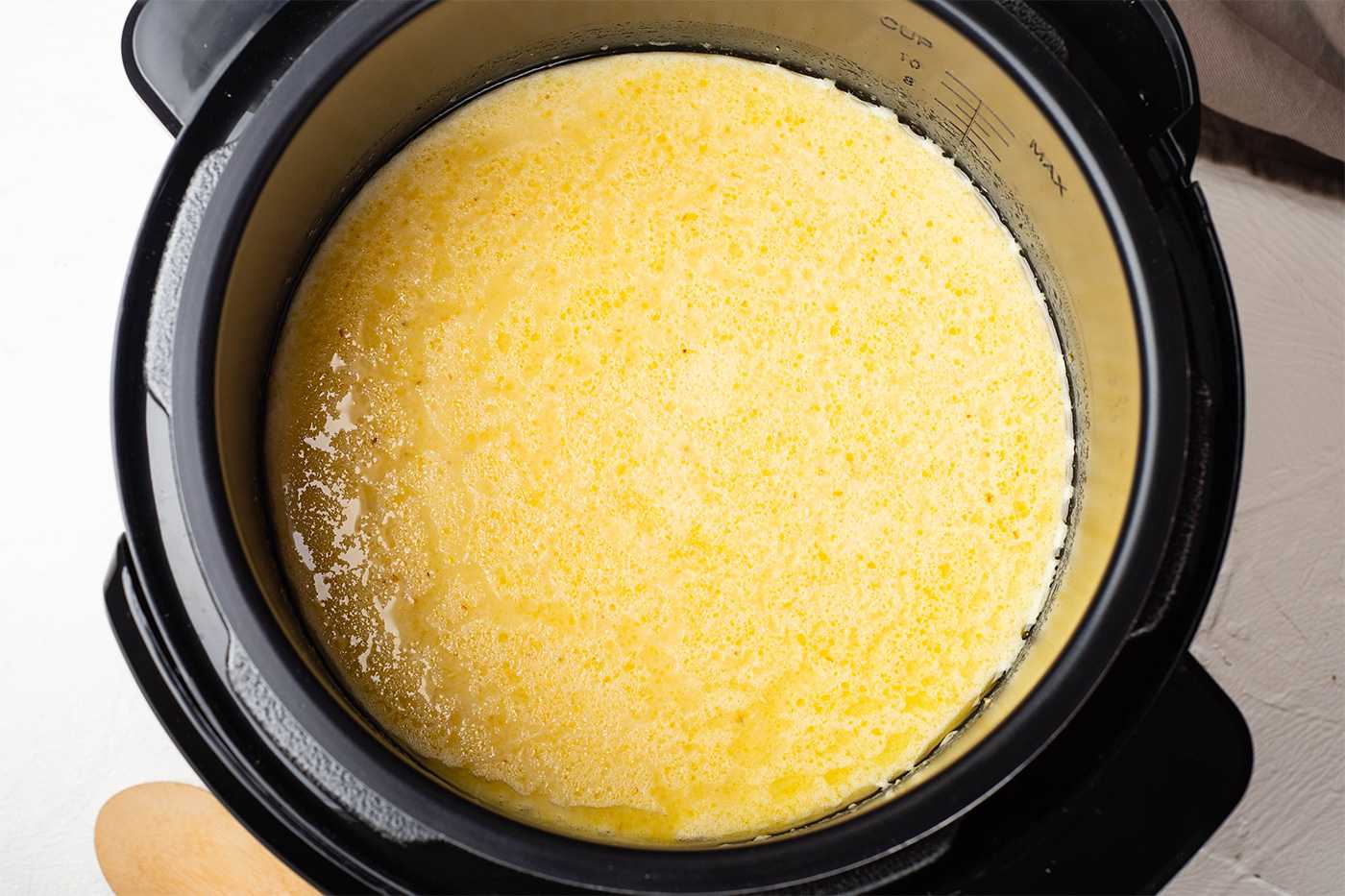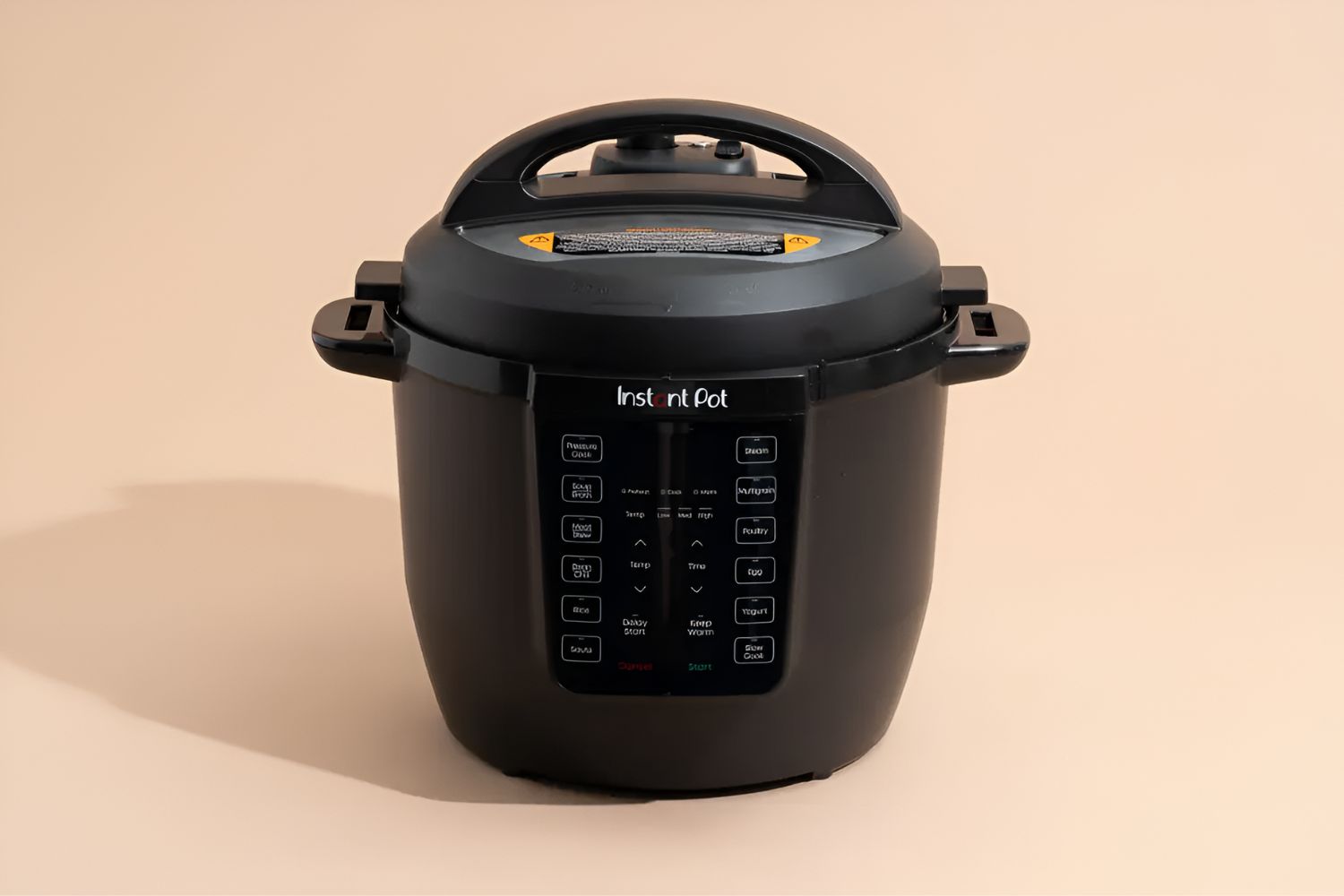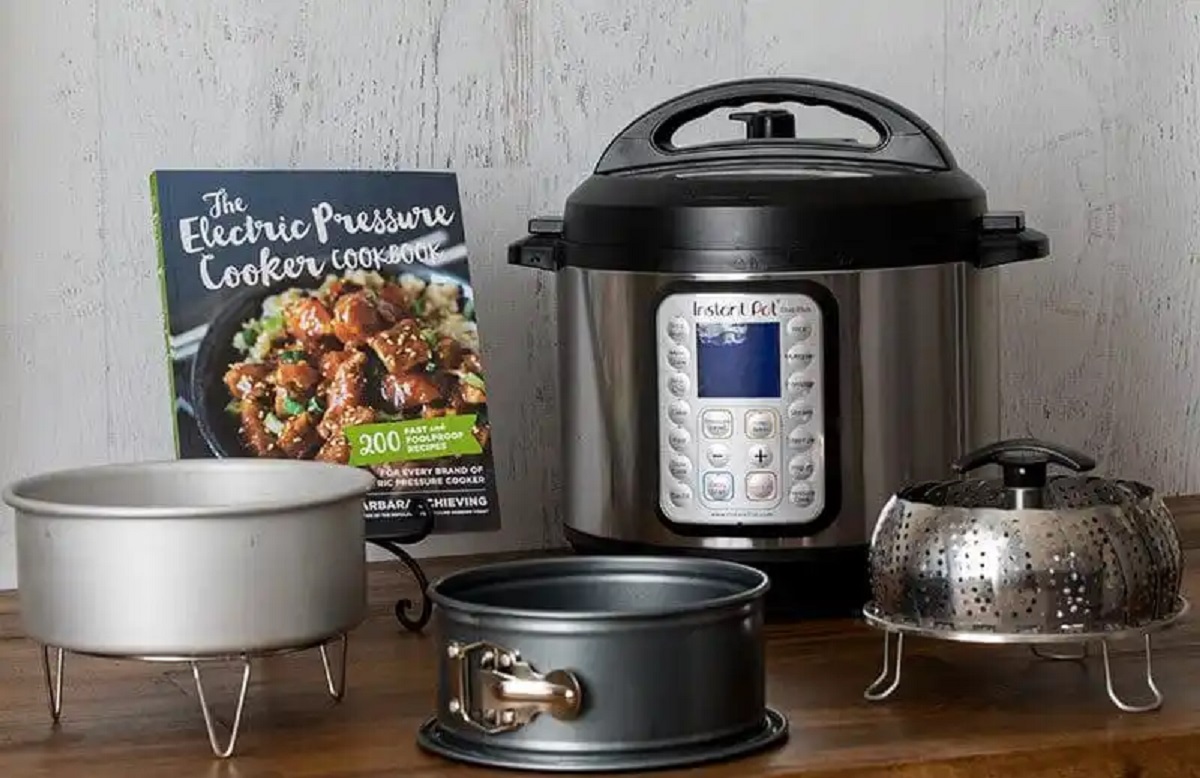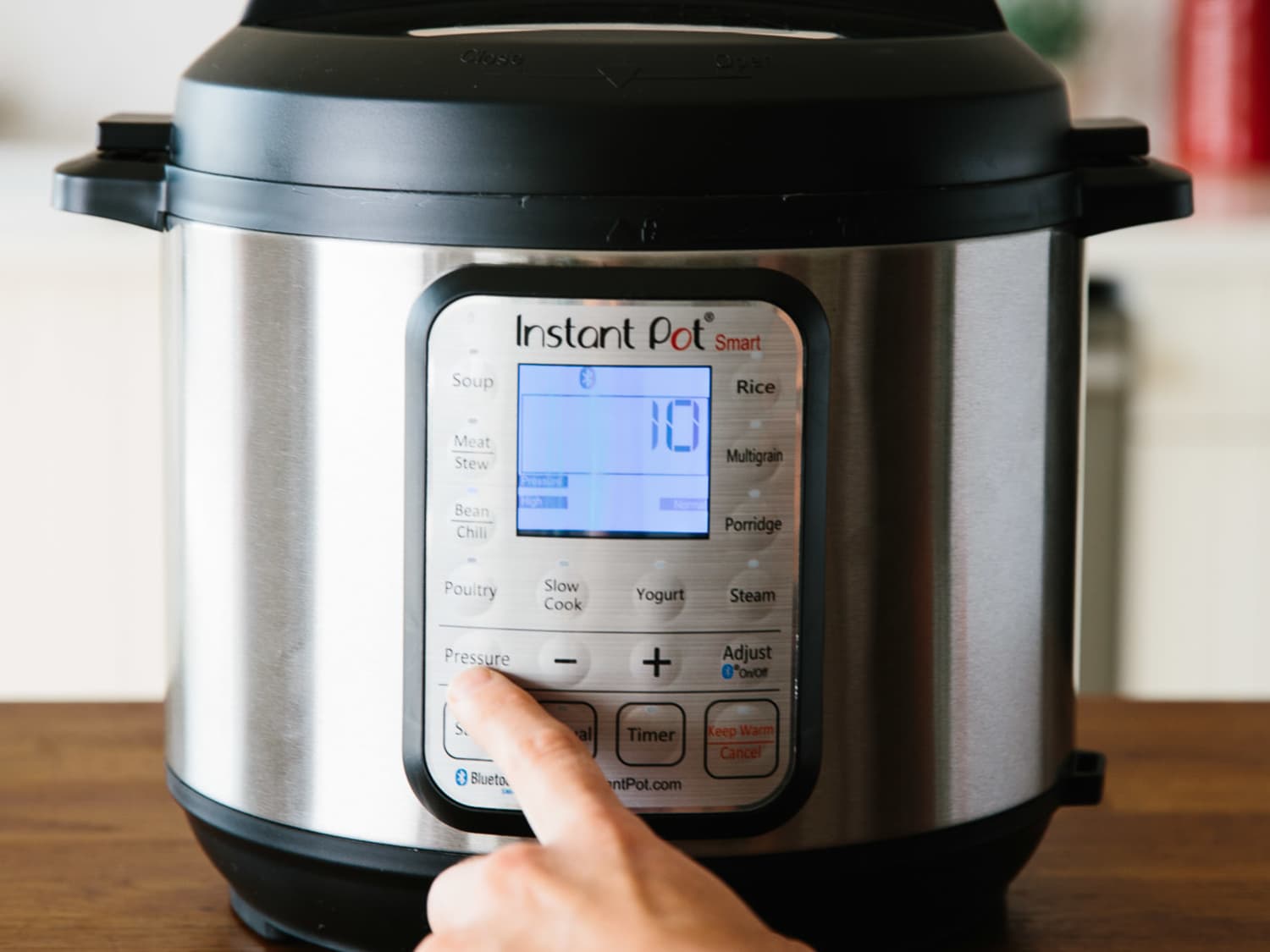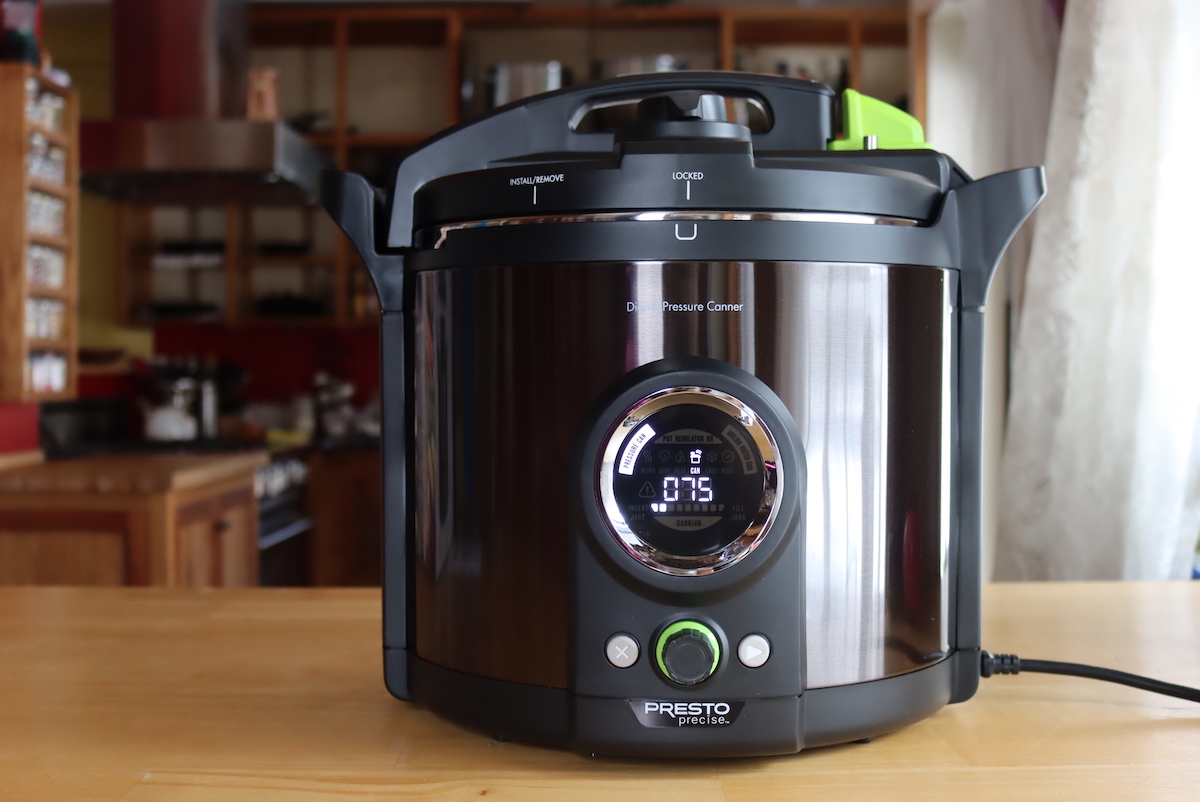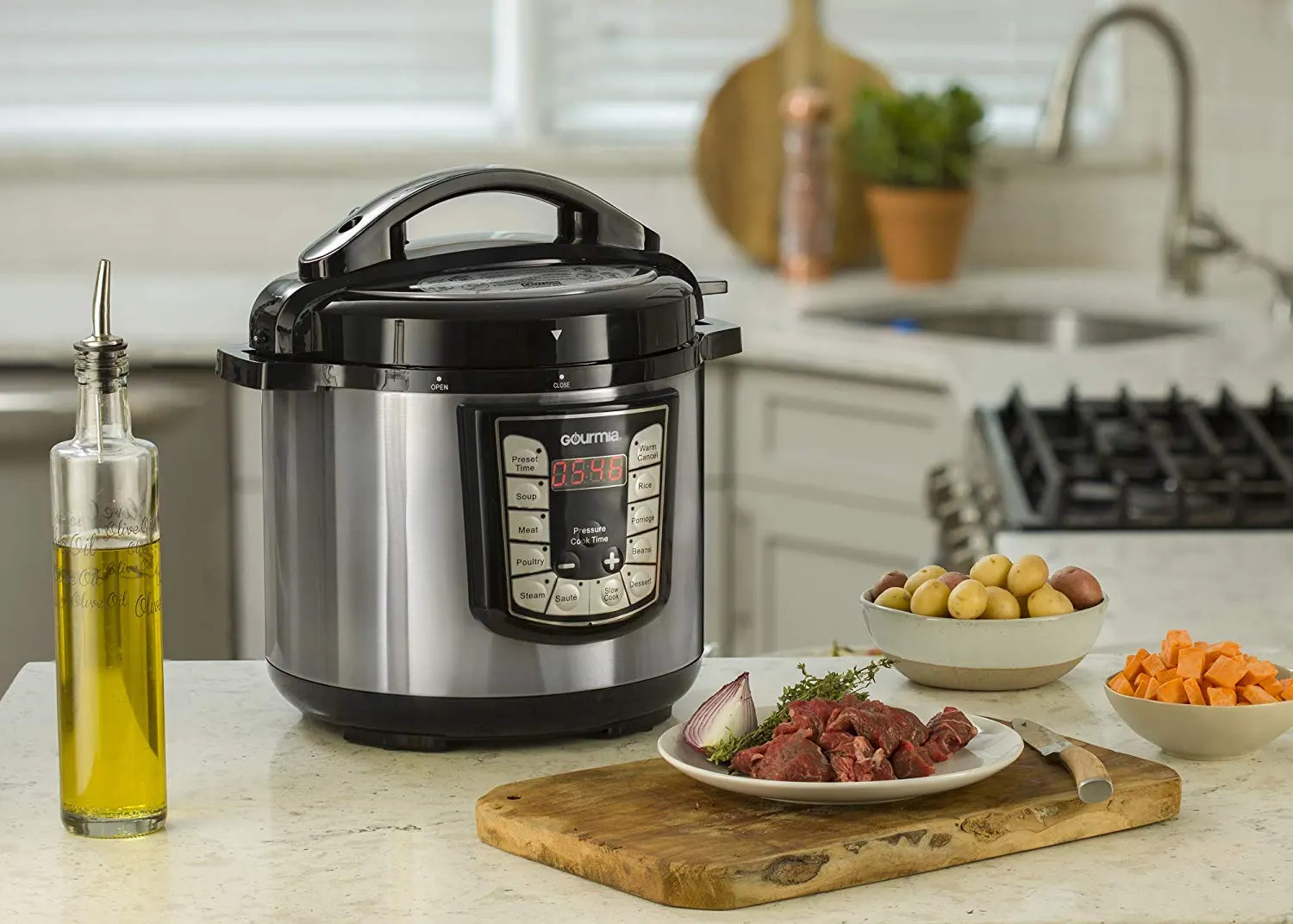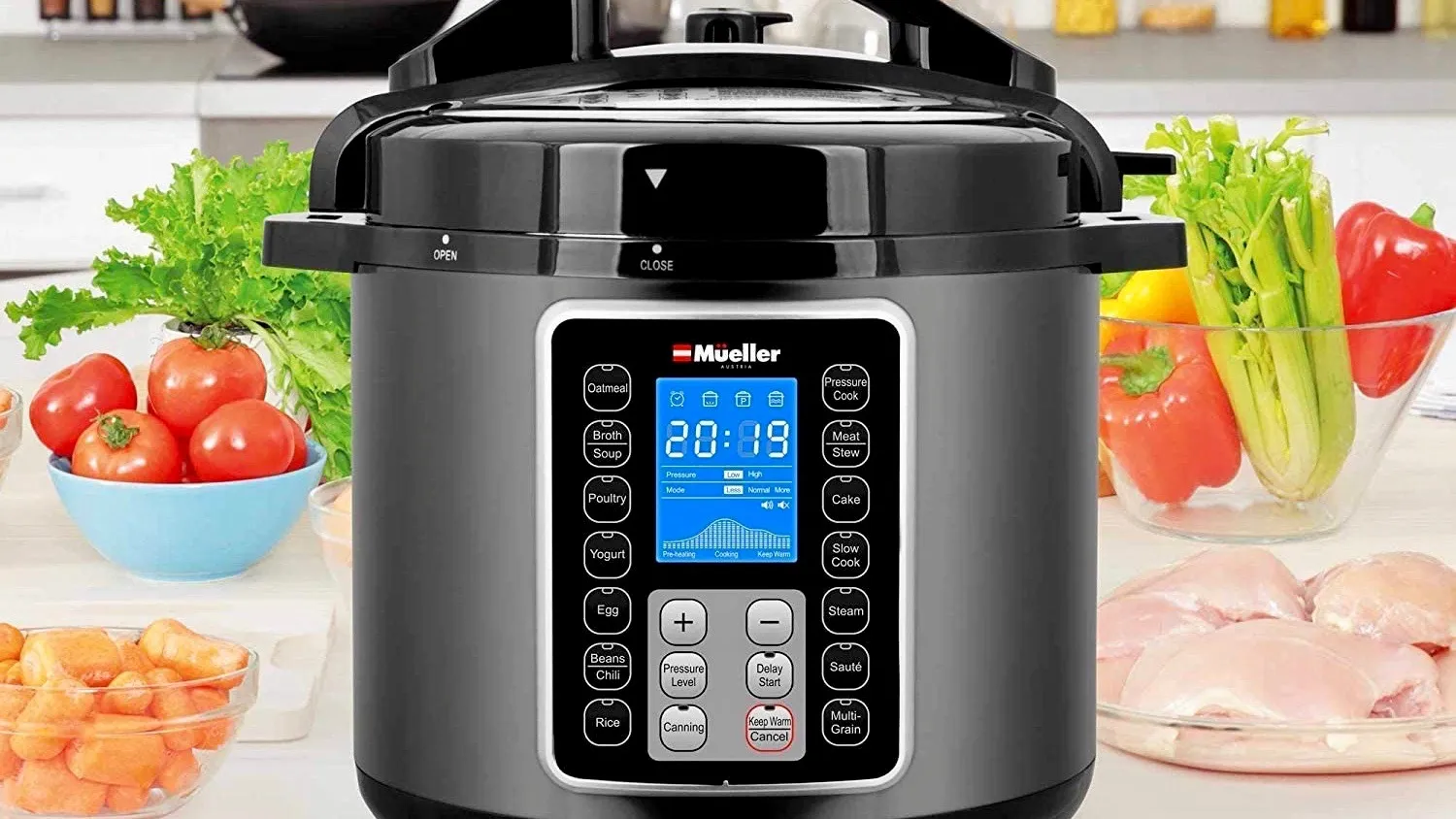Introduction
Cooking salmon in an electric pressure cooker is a convenient and efficient way to enjoy this flavorful and nutritious fish. The electric pressure cooker locks in the natural juices and flavors of the salmon, resulting in moist and tender fillets every time. Whether you’re a seafood enthusiast or a busy home cook looking for quick and healthy meal options, the electric pressure cooker is a game-changer when it comes to cooking salmon.
Salmon is not only delicious but also packed with beneficial nutrients like omega-3 fatty acids, which are great for heart health. It is a versatile fish that can be prepared in various ways, but using an electric pressure cooker takes the guesswork out of the equation and ensures consistent results.
In this article, we will explore the benefits of cooking salmon in an electric pressure cooker and provide you with a step-by-step guide to achieving perfectly cooked salmon every time. Whether you’re a beginner or an experienced cook, this method will simplify your fish-cooking routine and leave you with delicious and healthy meals that your whole family will love.
So, put on your chef’s hat, grab your electric pressure cooker, and let’s dive into the world of cooking salmon in a whole new way.
Benefits of Cooking Salmon in an Electric Pressure Cooker
Cooking salmon in an electric pressure cooker offers a multitude of benefits that make it a fantastic option for seafood lovers. Here are some of the key advantages:
- Time-saving: One of the major benefits of using an electric pressure cooker is the significant time it saves. Compared to traditional cooking methods, such as baking or pan-searing, a pressure cooker can cook salmon in a fraction of the time. This is perfect for busy individuals or those who want a quick yet delicious meal.
- Tender and moist results: The sealed environment of the electric pressure cooker helps lock in moisture and flavor, producing incredibly tender and juicy salmon fillets. Say goodbye to dry or overcooked fish!
- Flavor retention: The pressure cooking process enhances the natural flavors of the salmon, resulting in a more intense and delicious taste. The seasonings and spices infuse into the fish, creating a depth of flavor that is hard to achieve with other cooking methods.
- Nutrient preservation: Cooking salmon in an electric pressure cooker preserves more of the fish’s nutrients compared to methods like frying or grilling. This is especially true for delicate omega-3 fatty acids, which are essential for heart and brain health.
- Convenience: Electric pressure cookers are incredibly user-friendly and require minimal effort. Once you set the cooking time and pressure, you can simply walk away and let the appliance do its magic. No need to worry about constant monitoring or stirring.
These benefits make cooking salmon in an electric pressure cooker an appealing option for anyone looking for a fast, flavorful, and nutrient-rich meal. Whether you’re a beginner in the kitchen or an experienced chef, this cooking method will undoubtedly elevate your salmon-dishing game.
Choosing the Right Type of Salmon
When it comes to cooking salmon, selecting the right type of fish is essential for achieving the best flavor and texture. Here are a few factors to consider when choosing salmon for your electric pressure cooker:
- Wild-caught vs. farm-raised: Wild-caught salmon is generally considered to have a richer flavor and firmer texture compared to farm-raised salmon. It is also more sustainable and often higher in beneficial omega-3 fatty acids. However, both options can be used in the electric pressure cooker, depending on your personal preferences and availability.
- Fillet or steak: Salmon can be purchased as fillets or steaks. Fillets are boneless and have a more delicate texture, while steaks are cut crosswise and often have a firmer texture. Both options work well in the electric pressure cooker, but fillets are more common and preferred by many for their tenderness.
- Fresh or frozen: Fresh salmon is ideal if it is readily available and of high quality. However, frozen salmon is a convenient and budget-friendly alternative, and it works just as well in the pressure cooker. If using frozen fillets, make sure to thaw them thoroughly before cooking to ensure even and consistent results.
- Skin-on or skinless: Salmon can be purchased with or without the skin. Leaving the skin on during cooking helps to retain moisture and prevents sticking, resulting in a juicier fillet. However, if you prefer skinless salmon or plan to use the cooked fish in recipes where the skin is not desired, you can easily remove it before or after cooking.
It’s important to choose fresh, high-quality salmon for the best results. If possible, buy from a reputable fishmonger or ensure that the fish is properly labeled if purchasing from a grocery store. Remember, the quality of the salmon will greatly impact the flavor and overall success of your electric pressure cooker recipe.
Ingredients Needed
To cook salmon in an electric pressure cooker, you’ll need the following ingredients:
- Salmon fillets: Choose fresh or thawed salmon fillets, preferably skin-on, for the best results. Depending on the number of servings needed, calculate approximately 6-8 ounces (170-225 grams) of salmon per person.
- Seasonings: Add flavor to your salmon with a variety of seasonings such as salt, freshly ground black pepper, garlic powder, onion powder, paprika, or dill. Experiment with different combinations to find your favorite.
- Liquid: To create steam and pressure in the cooker, you’ll need a small amount of liquid. This can be water, vegetable broth, chicken broth, white wine, or lemon juice.
- Optional additions: Enhance the flavor of your salmon by including additional ingredients like sliced lemons, fresh herbs (such as dill or parsley), minced garlic, or thinly sliced onions. These extra elements will infuse their flavors into the fish during the cooking process.
It’s important to note that the ingredients needed for cooking salmon in an electric pressure cooker are flexible and can be adjusted to suit your taste preferences. Feel free to experiment with different spices, herbs, and liquids to create a unique flavor profile that suits you best.
Now that you have your ingredients ready, let’s move on to the step-by-step instructions for cooking salmon in an electric pressure cooker.
Step-by-Step Instructions on Cooking Salmon in an Electric Pressure Cooker
Follow these simple steps to cook salmon to perfection in your electric pressure cooker:
- Season the salmon fillets: Pat the salmon fillets dry with a paper towel. Season them generously with salt, pepper, and any other desired seasonings. Let them sit at room temperature for a few minutes to allow the flavors to meld.
- Preheat the pressure cooker: Turn on your electric pressure cooker and select the “Sauté” or “Browning” function. Add a small amount of oil to the pot and heat it until it shimmers.
- Sear the salmon: Carefully place the seasoned salmon fillets in the hot oil, skin side down if using skin-on fillets. Sear them for 2-3 minutes on each side until they develop a golden brown crust. This step adds extra flavor and texture to the salmon.
- Add liquid and aromatics: Pour in the desired liquid, such as water, broth, or wine. You can also add sliced lemons, minced garlic, or fresh herbs to infuse the salmon with additional flavors. Be sure not to exceed the maximum fill line of your pressure cooker.
- Secure the lid: Place and lock the lid on the pressure cooker, making sure the pressure release valve is set to the sealed position. Consult your pressure cooker’s manual for specific instructions on sealing the lid.
- Set the cooking time and pressure: Select the “Pressure Cook” or “Manual” setting on your electric pressure cooker. Adjust the cooking time according to the thickness of your salmon fillets. As a general guideline, cook thicker fillets for about 4-6 minutes under high pressure and thinner fillets for 2-4 minutes.
- Start the cooking process: Once you have set the cooking time and pressure, the pressure cooker will start building pressure. It may take a few minutes to reach the desired pressure, after which the cooking time will begin to count down.
- Natural release or quick release: After the cooking time is complete, you can either allow the pressure to release naturally or perform a quick release by carefully turning the pressure release valve to the venting position. If you choose the natural release method, let the pressure release on its own for about 5-10 minutes before opening the lid.
- Serve and enjoy: Carefully remove the salmon fillets from the pressure cooker using tongs or a spatula. The salmon should be moist, tender, and flaky. Serve it immediately with your favorite side dishes or sauces.
With these easy-to-follow steps, you can confidently cook delicious salmon in your electric pressure cooker. Remember to adjust the cooking time based on the thickness of the fillets and experiment with different seasonings and add-ons to suit your taste preferences. Enjoy your perfectly cooked salmon!
Tips for Perfectly Cooked Salmon
Cooking salmon in an electric pressure cooker is a relatively straightforward process, but following a few tips can help ensure that your salmon turns out perfectly every time. Consider these tips for the best results:
- Thaw frozen salmon: If using frozen salmon fillets, make sure to thaw them thoroughly before cooking. This ensures even cooking and prevents any ice crystals from impacting the texture of the fish.
- Adjust cooking time: The cooking time may vary depending on the thickness of the salmon fillets. Thicker fillets will require a longer cooking time, while thinner ones will cook more quickly. Use a food thermometer to check the internal temperature of the fish, which should reach 145°F (63°C) for optimal doneness.
- Don’t overcook: Be mindful not to overcook the salmon, as it can become dry and lose its tenderness. Remember that the residual heat will continue to cook the salmon even after the pressure cooker is turned off, so slightly undercooking the fish is better than overcooking.
- Experiment with seasonings: While simple seasonings like salt and pepper work well, feel free to experiment with different herbs, spices, and marinades to suit your taste preferences. Consider flavors like lemon zest, smoked paprika, fresh dill, or a soy-ginger glaze for a unique twist.
- Use flavorful liquids: The liquid used in the pressure cooker not only creates steam to cook the salmon but also imparts flavor. Experiment with different liquids like vegetable broth, white wine, or citrus juices to enhance the taste of your salmon.
- Rest before serving: Let the salmon rest for a few minutes after cooking to allow the juices to redistribute. This helps to ensure a moist and flavorful final result. Cover the cooked salmon loosely with foil during the resting period to keep it warm.
- Garnish and serve: Add a final touch of freshness and visual appeal by garnishing your cooked salmon with a squeeze of lemon juice, chopped fresh herbs, or a drizzle of extra virgin olive oil. Serve with your favorite side dishes, such as steamed vegetables, roasted potatoes, or a refreshing salad.
By keeping these tips in mind, you’ll be well on your way to achieving perfectly cooked salmon in your electric pressure cooker. Don’t be afraid to experiment and adjust the cooking process to suit your preferences. Enjoy the delicious, healthy, and hassle-free meals that salmon in an electric pressure cooker can provide!
Flavorful Seasoning Options
Seasoning is the key to adding depth and enhancing the flavor of your salmon when cooking it in an electric pressure cooker. While simple salt and pepper can do the trick, there are numerous flavorful options to elevate your salmon dish. Here are some seasoning ideas to consider:
- Lemon and dill: Squeeze fresh lemon juice over the salmon and sprinkle it with chopped fresh dill for a light and refreshing flavor combination. The citrusy tang of the lemon complements the natural richness of the salmon, while the aromatic dill adds a delicate herbal note.
- Cajun spices: Give your salmon a little kick by using Cajun spice blends. These blends typically include a mix of paprika, cayenne pepper, garlic powder, onion powder, and other flavorful spices. The smoky and slightly spicy seasoning will add a burst of flavor to your salmon.
- Asian-inspired marinade: For an Asian twist, marinate the salmon in a mixture of soy sauce, ginger, garlic, and a touch of honey or brown sugar before cooking. This imparts a savory, sweet, and slightly tangy taste that pairs well with the natural richness of salmon.
- Herb-infused butter: Create an herb-infused butter by melting butter and stirring in your favorite herbs like thyme, rosemary, or basil. Brush the butter mixture onto the salmon before cooking to add a rich and aromatic flavor to the fish.
- Smoked paprika and garlic: Combine smoked paprika, garlic powder, salt, and pepper to create a savory rub for the salmon. The smokiness of the paprika adds depth, while the garlic provides a fragrant and robust flavor.
- Maple glaze: Drizzle a mixture of maple syrup, dijon mustard, and a dash of soy sauce over the salmon before cooking. The sweet and tangy glaze caramelizes and enhances the natural sweetness of the fish, creating a delightful combination of flavors.
These are just a few examples of the endless seasoning options available for your salmon. Feel free to get creative and experiment with different herbs, spices, and marinades to discover your favorite flavor combinations. Remember to adjust the seasoning quantities based on your preferences and the amount of salmon being cooked. Enjoy exploring the wonderful world of flavorful seasonings with your electric pressure cooker salmon!
Serving Suggestions and Accompaniments
Now that your perfectly cooked salmon is ready, it’s time to think about how to serve and complement this delicious dish. Here are some serving suggestions and accompaniments to consider:
- Simple side dishes: Serve your salmon with a side of steamed vegetables, such as broccoli, asparagus, or green beans, to add freshness and crunch to your meal. You could also opt for a simple green salad dressed with lemon vinaigrette or a tangy yogurt-based dressing.
- Grains or starches: For a more substantial meal, pair your salmon with grains or starches like quinoa, couscous, wild rice, or roasted potatoes. These add texture and help balance the flavors of the dish.
- Sauces and dips: Elevate the salmon’s taste by serving it with a flavorful sauce or dip. A classic dill sauce made with yogurt or sour cream and fresh herbs complements the fish beautifully. Alternatively, you can try a tangy citrus-tarragon sauce, a creamy garlic aioli, or a spicy mango salsa for a burst of contrasting flavors.
- Herb-infused oils: Drizzle your cooked salmon with a drizzle of herb-infused oil, such as basil, thyme, or lemon-infused olive oil, for an added burst of aroma and depth of flavor. This simple addition can elevate the dish to a whole new level.
- Roasted vegetables: If you prefer a heartier side dish, roasted vegetables like carrots, Brussels sprouts, or sweet potatoes make a delicious and nutritious accompaniment to your salmon. The combination of the caramelized flavors from the vegetables and the lightly seasoned fish is a match made in culinary heaven.
- Citrus fruits: Freshen up the dish with a squeeze of lemon or lime juice over the salmon just before serving. The citrusy zing adds brightness and tang, balancing the richness of the fish.
When it comes to serving suggestions and accompaniments, the options are endless. Feel free to mix and match to suit your preferences and create a well-rounded and satisfying meal. Remember to consider flavors, textures, and colors to create a visually appealing and delicious plate. Enjoy the versatility and countless possibilities that come with serving your electric pressure cooker salmon!
Frequently Asked Questions
Here are some commonly asked questions about cooking salmon in an electric pressure cooker:
-
Can I use frozen salmon?
Yes, frozen salmon can be used in an electric pressure cooker. Make sure to thaw the salmon fillets completely before cooking to ensure even cooking and avoid any issues with texture. -
How long does it take to cook salmon in an electric pressure cooker?
The cooking time varies depending on the thickness of the salmon fillets. Generally, thicker fillets require around 4-6 minutes under high pressure, while thinner fillets can be cooked in about 2-4 minutes. Adjust the cooking time accordingly and use a food thermometer to check for doneness. -
Should I use the “Quick Release” or “Natural Release” method?
Either method can be used, depending on your preference and the recipe. The “Quick Release” allows the pressure to escape immediately, while the “Natural Release” allows the pressure to come down gradually. For delicate seafood like salmon, a natural release can help prevent the fish from becoming dry or overcooked. -
Can I use the remaining liquid for making a sauce or broth?
Absolutely! The flavorful liquid left in the pressure cooker after cooking the salmon can be used as a base for sauces, gravies, or as part of a flavorful broth for soups or stews. Simply strain and reserve the liquid for later use. -
Can I cook other types of fish in an electric pressure cooker?
Yes, an electric pressure cooker can be used to cook various types of fish. However, the cooking times may vary depending on the thickness and type of fish being used. Adjust the cooking time accordingly and refer to specific recipes for guidance. -
Do I need to remove the skin before cooking?
It is a personal preference whether to cook salmon with or without the skin. Leaving the skin on during cooking can help retain moisture and prevent sticking. However, if you prefer skinless salmon or plan to use the cooked fish in recipes where the skin is not desired, you can easily remove it before or after cooking.
If you have any further questions or concerns about cooking salmon in an electric pressure cooker, consult your specific pressure cooker’s manual or refer to trusted recipe sources for guidance. Enjoy the ease, convenience, and delicious results of cooking salmon in your electric pressure cooker!
Conclusion
Cooking salmon in an electric pressure cooker is a fantastic way to enjoy this flavorful and nutritious fish. The electric pressure cooker locks in the natural juices and flavors of the salmon, resulting in moist and tender fillets that are bursting with taste. With the convenience and efficiency of the pressure cooker, you can have a delicious meal ready in no time.
Throughout this article, we’ve explored the benefits of using an electric pressure cooker for cooking salmon, discussed how to choose the right type of salmon, provided step-by-step instructions, and shared tips for achieving perfectly cooked results. We’ve also covered a range of flavorful seasoning options, suggested side dishes and accompaniments, and answered commonly asked questions.
Cooking salmon in an electric pressure cooker opens up a world of possibilities. From simple preparations with classic seasonings to more adventurous flavor profiles, you’re sure to find a combination that tantalizes your taste buds. So, gather your ingredients, follow the steps, and get creative with your seasonings and accompaniments.
Whether you’re a seafood enthusiast or a busy home cook looking for quick and healthy meal options, cooking salmon in an electric pressure cooker is a game-changer. It allows you to enjoy perfectly cooked salmon that is tender, moist, and full of flavor. So, why wait? Grab your electric pressure cooker, and start exploring the wonderful world of salmon dishes right in your own kitchen.







